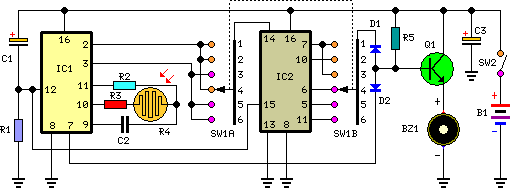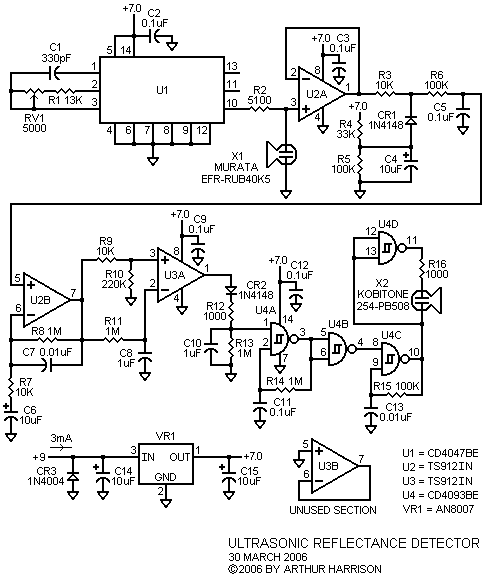
Tan TimerCircuit With 4060 IC

This device is designed for individuals seeking to achieve a tan while minimizing excessive exposure to sunlight. It utilizes electrolytic capacitors as one of its components.
The tanning device operates by utilizing a controlled exposure mechanism that regulates the intensity and duration of sunlight exposure. The primary function of the electrolytic capacitors in this circuit is to store and release electrical energy, which is essential for the operation of various electronic components within the system.
The tanning device may incorporate a microcontroller that manages the tanning process, ensuring that users receive optimal exposure without exceeding safe limits. The microcontroller can be programmed to monitor environmental conditions, such as UV index levels, and adjust the tanning duration accordingly.
In addition to electrolytic capacitors, the circuit may include other components such as resistors, diodes, and transistors to create a stable power supply and control the operation of the tanning lamps. A feedback loop may be established to continuously monitor the tanning process, allowing for real-time adjustments to maintain the desired tanning effect while protecting the user from harmful UV radiation.
Safety features, such as timers and automatic shut-off mechanisms, can be integrated into the design to enhance user protection. Overall, this tanning device aims to provide a balanced approach to achieving a tan while prioritizing skin health and safety.Function: for people wanting to get tanned but at the same time wishing to avoid an excessive exposure to sunlight. Component: Electrolytic Capacitors, .. 🔗 External reference
The tanning device operates by utilizing a controlled exposure mechanism that regulates the intensity and duration of sunlight exposure. The primary function of the electrolytic capacitors in this circuit is to store and release electrical energy, which is essential for the operation of various electronic components within the system.
The tanning device may incorporate a microcontroller that manages the tanning process, ensuring that users receive optimal exposure without exceeding safe limits. The microcontroller can be programmed to monitor environmental conditions, such as UV index levels, and adjust the tanning duration accordingly.
In addition to electrolytic capacitors, the circuit may include other components such as resistors, diodes, and transistors to create a stable power supply and control the operation of the tanning lamps. A feedback loop may be established to continuously monitor the tanning process, allowing for real-time adjustments to maintain the desired tanning effect while protecting the user from harmful UV radiation.
Safety features, such as timers and automatic shut-off mechanisms, can be integrated into the design to enhance user protection. Overall, this tanning device aims to provide a balanced approach to achieving a tan while prioritizing skin health and safety.Function: for people wanting to get tanned but at the same time wishing to avoid an excessive exposure to sunlight. Component: Electrolytic Capacitors, .. 🔗 External reference





